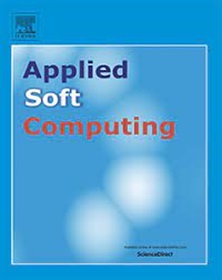偏振SAR图像分类的尺度感知三重语义深度网络
IF 6.6
1区 计算机科学
Q1 COMPUTER SCIENCE, ARTIFICIAL INTELLIGENCE
引用次数: 0
摘要
深度学习在偏振合成孔径雷达(PolSAR)图像分类中表现出优异的性能。然而,复杂的PolSAR场景通常包含不同尺度和方向的地形物体,现有的方法依赖于单一的网络架构,难以有效地捕获多尺度地形物体和精确的边缘。为了解决这一挑战,我们提出了一种尺度感知的PolSAR图像分类三重语义深度网络,这是一种新的“分而治之”框架。该网络将场景划分为同质、异构和边界区域,然后自定义特定的子网,以学习每个区域的尺度感知特征。对于边界区域,设计了一个简单的卷积神经网络(CNN)来有效地捕获局部细节。对于均匀区域,利用基于超像素的图卷积网络(SGCN)提取上下文特征。对于异构对象,开发了一种更大规模的c-hop SGCN来捕获全局语义信息。这些子网集成了一个注意机制,以选择相关的特征和最小化冗余。在四个真实PolSAR数据集上的实验表明,我们的方法优于最先进的方法,特别是在分类异构对象和获得精确边缘方面。本文章由计算机程序翻译,如有差异,请以英文原文为准。
Scale-aware triple semantic deep network for polarimetric SAR image classification
Deep learning has demonstrated outstanding performance in polarimetric synthetic aperture radar (PolSAR) image classification. However, complex PolSAR scenes typically contain terrain objects of varying scales and orientations, and existing methods that rely on a single network architecture struggle to effectively capture both multi-scale terrain objects and precise edges. To address this challenge, we propose a scale-aware triple semantic deep network for PolSAR image classification, which is a novel “divide and conquer” framework. This network divides the scene into homogeneous, heterogeneous, and boundary regions, and then customizes specific subnetwork to learn scale-aware features for each region. For the boundary regions, a simple convolutional neural network (CNN) is designed to capture local details effectively. For homogeneous regions, a superpixel-based graph convolutional network (SGCN) is utilized to extract contextual features. For heterogeneous objects, a larger-scale -hop SGCN is developed to capture global semantic information. These subnetworks are integrated with an attention mechanism to select relevant features and minimize redundancy. Experiments on four real PolSAR datasets demonstrate that our method outperforms state-of-the-art approaches, particularly in classifying heterogeneous objects and achieving precise edges.
求助全文
通过发布文献求助,成功后即可免费获取论文全文。
去求助
来源期刊

Applied Soft Computing
工程技术-计算机:跨学科应用
CiteScore
15.80
自引率
6.90%
发文量
874
审稿时长
10.9 months
期刊介绍:
Applied Soft Computing is an international journal promoting an integrated view of soft computing to solve real life problems.The focus is to publish the highest quality research in application and convergence of the areas of Fuzzy Logic, Neural Networks, Evolutionary Computing, Rough Sets and other similar techniques to address real world complexities.
Applied Soft Computing is a rolling publication: articles are published as soon as the editor-in-chief has accepted them. Therefore, the web site will continuously be updated with new articles and the publication time will be short.
 求助内容:
求助内容: 应助结果提醒方式:
应助结果提醒方式:


